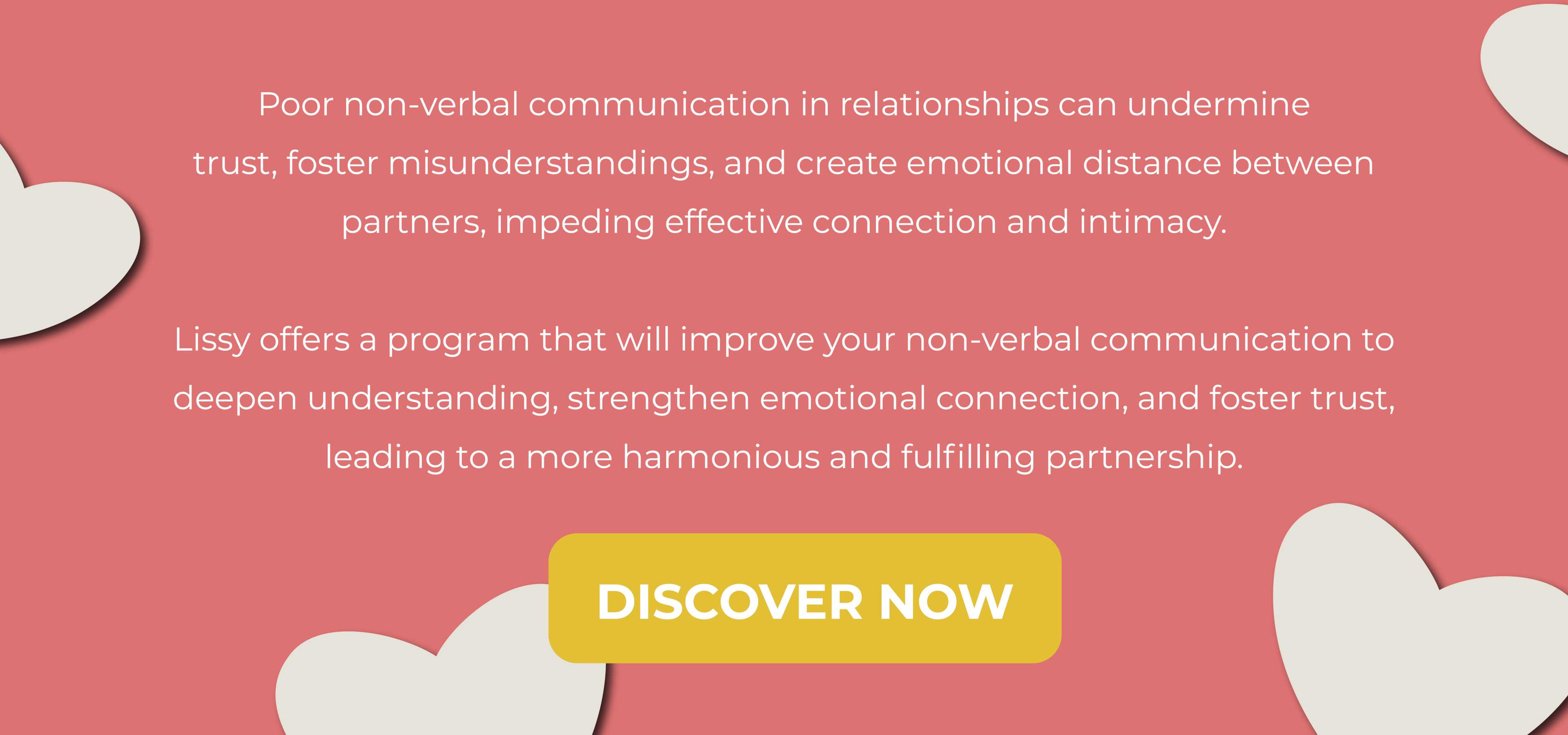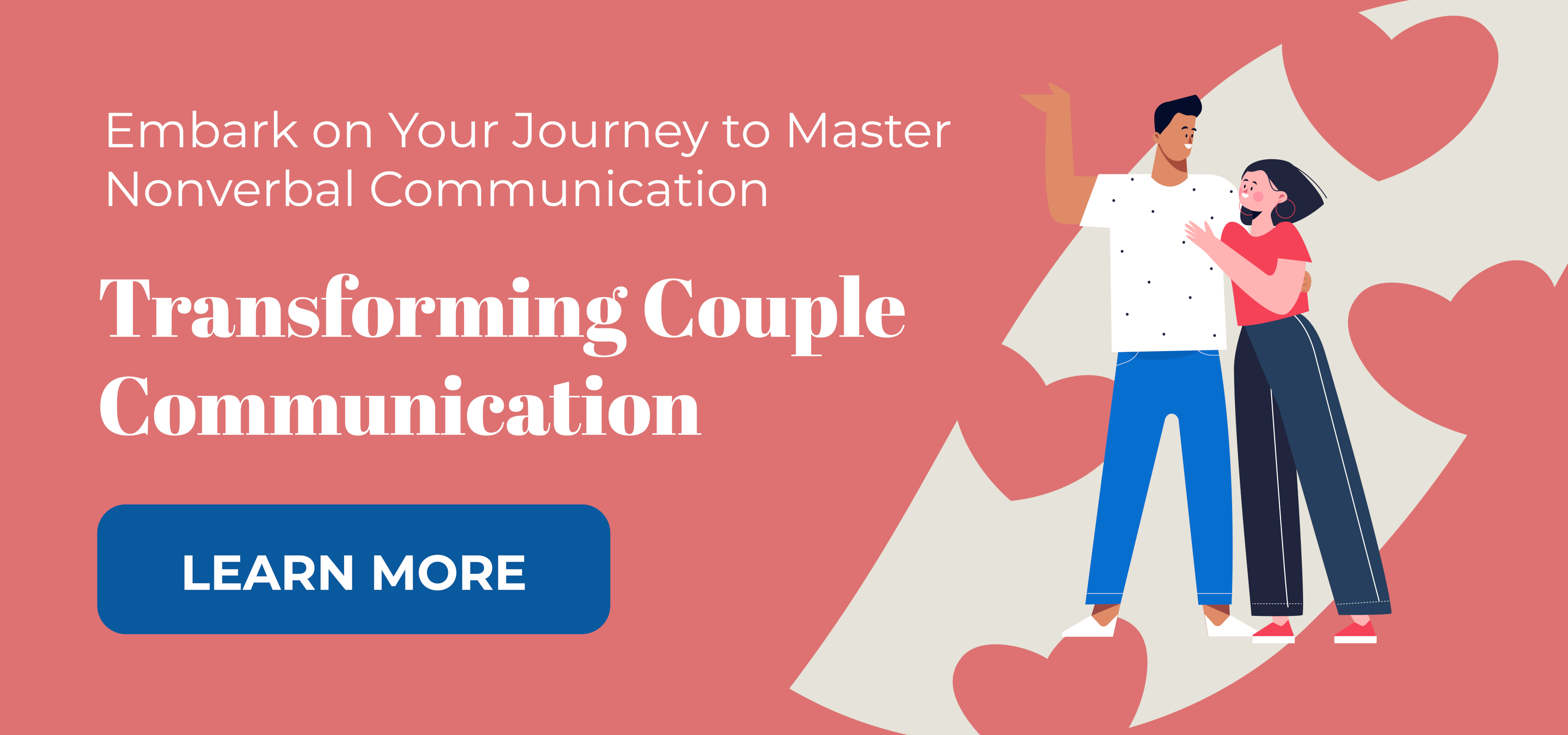Why Is Non-Verbal Communication Important in a Relationship?

Why is non-verbal communication important? Imagine engaging in a conversation where your carefully chosen words contrast sharply with your partner's crossed arms and piercing gaze. This scenario underscores the profound impact of nonverbal communication, transcending spoken language and echoing loudly in our interactions.
This article delves into the significance of nonverbal cues in nurturing high-quality relationships across personal, professional, and therapeutic realms. It's akin to appreciating the silence between musical notes, which gives depth and meaning to the melody.
Join us as we explore the importance, advantages, and practical applications of nonverbal communication. We'll tackle challenges and guide you in integrating this subtle language into your communication repertoire. Prepare for a journey into the world of unspoken dialogue!
The Power of Nonverbal Communication: Tracing its Roots
Nonverbal communication, a language without words, plays a pivotal role in our daily interactions. It includes gestures, facial expressions, body language, and tone of voice, complementing and enhancing our spoken messages. Its origins date back to the dawn of human interaction, where nonverbal cues were essential for survival, leadership, and social cohesion.
As we journey through history, we find that cultures worldwide have developed unique nonverbal communication styles. From handshakes and respectful bows to varying eye contact, these silent expressions convey emotions and intentions powerfully.
Non verbal cues orchestrate our conversations wordlessly, highlighting their indispensable role in communication. They are seamlessly woven into our dialogues, often revealing more than our spoken words. Mastering these cues can elevate our ability to navigate complex interpersonal relationships, professional collaborations, and therapeutic settings with greater clarity and empathy.
In the sections to follow, we'll delve into the subtleties of facial expressions, body language, and vocal tone. You'll learn to appreciate and harness the power of this unspoken language, recognizing that what's left unsaid often speaks louder than words.
Why Non Verbal Communication is Important: Understanding it's Significance

Ever wondered about the profound impact of a simple gesture or a look during a conversation? This curiosity leads us to the heart of understanding why nonverbal communication is so pivotal. It’s like a silent language, seamlessly intertwined in our dialogues, adding richness and meaning far beyond spoken words.
Nonverbal communication—be it through a knowing glance, a reassuring gesture, or a meaningful pause—completes our spoken messages. It often reveals unspoken thoughts and feelings, sometimes even contradicting our verbal expressions. This silent dialogue lends authenticity and depth, enriching our interactions with layers of empathy and understanding.
Silent Eloquence: The Impact and Mastery of Nonverbal Communication
As we delve into the realm of nonverbal cues, we recognize their role in silent eloquence, enhancing communication and fostering deeper connections. Nonverbal communication types such as gestures, facial expressions, and body language not only complement but can sometimes speak louder than verbal messages.
A key aspect of nonverbal communication is its ability to convey emotions and intentions, offering insights into a person's true feelings. For instance, avoiding eye contact or a certain facial expression can reveal more than words. These nonverbal signals are often trusted over spoken words, especially in multicultural environments where cultural differences in communication styles are prominent.
Silence, a vital component of nonverbal communication, plays a significant role in conveying empathy and understanding. In professional interactions, the way a person manages their voice and speech can leave a lasting impression, influencing how they are perceived.
Effective communication involves not just speaking but actively listening and observing nonverbal cues. It's about understanding the message conveyed through someone's posture, the distance they maintain (personal space), and their way of communicating nonverbally.
To communicate effectively, one must learn to recognize and control their nonverbal behaviors, adapting them to various situations and cultures. This skill is essential in every interaction, whether it's a casual conversation or a high-stakes negotiation.
Mastering nonverbal communication skills entails not just understanding but also practicing and refining these skills. It's about becoming a better communicator by being attuned to the subtle yet powerful language of nonverbal cues. In the following sections, we will explore the practical applications and benefits of honing these invaluable skills.
Revealing the Impact of Non Verbal Communication: Real Life Examples
Navigating Relationship Dynamics with Nonverbal Awareness:
Aisha and Raj, a couple navigating relationship challenges, discovered the importance of nonverbal cues. Despite verbal reassurances, their body language — crossed arms, averted eye contact, and tense postures — revealed underlying issues. With a counselor's guidance in understanding these nonverbal signals, they improved their communication and strengthened their relationship.
Cultural Sensitivity in the Workplace:
Amy, leading a diverse team, realized the significance of understanding nonverbal behaviors across cultures. She learned to interpret various gestures and facial expressions, enhancing her ability to communicate effectively with team members from different backgrounds.
The Role of Nonverbal Cues in Therapy:
In therapy sessions, Lissy Abrahams emphasizes the importance of nonverbal communication. Observing clients' gestures and expressions, she gains deeper insights into their emotional states, and shares these insights with her clients when appropriate.
Overcoming Interview Nerves with Nonverbal Skills:
Kwame, a recent graduate, addressed his interview nervousness by focusing on nonverbal communication. Through a specialized workshop, he mastered skills like maintaining eye contact, controlling voice modulation, and exhibiting confident body language, which complemented his verbal responses and significantly improved his interview performance.
These scenarios demonstrate the pivotal role of nonverbal communication in enhancing interpersonal dynamics, fostering better understanding in relationships, and achieving professional success.
Embracing Non Verbal Communication: A Step by Step Guide to Enhancing your Interactions

Step 1: Understanding the Basics
Begin with the fundamentals of nonverbal communication. Learn about different types of nonverbal communications, such as body language, facial expressions, postures, gestures, and vocal tones. Use resources like books, online courses, or videos to develop strong nonverbal communication skills.
Step 2: Developing Observation Skills
Cultivate the ability to observe nonverbal signals in everyday interactions. Notice how people's body language varies with their emotions and the subtle nuances in their voice or speech. This will enhance your capacity to recognize these cues effectively.
Step 3: Self-Reflection
Reflect on your nonverbal behaviors. Assess your body posture, facial expressions, and use of personal space in various emotional states. Understanding your nonverbal messages is crucial for self-improvement.
Step 4: Implementing Changes
Identify personal areas for improvement. If you usually cross your arms or avoid eye contact, try to adopt a more open posture and maintain eye contact more consistently.
Step 5: Seeking Feedback
Encourage feedback on your nonverbal communication from friends or family. Listening to their observations and adapting accordingly is vital for refining your skills.
Step 6: Continuous Practice and Patience
Mastering nonverbal communication is a gradual process. Practice regularly and be patient with your progress. Apply your learnings in real-life scenarios to continually improve.
By following these steps, you'll be more in tune with others' nonverbal cues and learn to control your nonverbal behaviors more effectively. Remember, effective communication is not only about the words you speak but also how you listen and respond nonverbally. For example, controlling your response to avoid sending mixed messages or understanding when someone's verbal message doesn't align with their body language can be critical in any interaction.
Understanding the Unspoken: Mastering the Art of Nonverbal Communication
Nonverbal communication plays an important role in how we interact and communicate, often revealing a person's true feelings more accurately than spoken words.
Our body language, encompassing gestures, facial expressions, and body posture, sends many different nonverbal messages during a conversation. For instance, standing too close might make someone feel uncomfortable, whereas appropriate physical space and limited physical contact can make communication more effective. Recognizing and understanding these nonverbal cues is a key skill in becoming a better communicator.
Different cultures have varying communication styles, and what is considered second nature in one may be misinterpreted in another. For example, hand gestures and body movement can differ significantly between cultures.
Paying attention to these subtle signals, along with the spoken voice, helps us better understand and control the message we send and receive. Nonverbal responses, like a change in posture or a certain look, can often convey emotion and a person’s true intentions, emphasizing the need to listen not just to the words, but also to the unspoken speech in any relationship or interaction.
Delving Deeper into the Significance of Non Verbal Communication

If you'd like to deepen your knowledge about non verbal communication, here are some highly recommended resources with detailed insights:
1. "What Every BODY is Saying" by Joe Navarro a former FBI agent focusing on understanding people's non-verbal behaviors.
2. "The Definitive Book of Body Language" by Allan and Barbara Pease is well-recognized for its insights on body language.
3. TED Talk; "Your Body Language May Shape Who You Are" by Amy Cuddy, social psychologist, focusing on the impact of body language and "power posing."
Frequently Asked Questions About Non Verbal Communication
What is the significance of communication?
Nonverbal communication plays a role as it helps convey emotions and sentiments while supporting communication. It allows us to express emotions like happiness, surprise, fear and anger. Additionally it influences our understanding of others by altering or contrasting with messages. It also plays a role in forming impressions about others emotions and intentions.
Why is non verbal communication important in the workplace?
In a setting non verbal communication holds importance:
-
for building relationships fostering productivity
-
for creating a positive work environment
-
establishing authority
-
expressing agreement or disagreement
-
contributes to negotiation and persuasion endeavors
Non verbal signals, like expressions, body language, and eye contact can often convey meaning than words in a professional environment.
Why is nonverbal communication important when interacting with patients?
Nonverbal communication plays a role in healthcare by assisting in the evaluation of patients responses to treatment. In addition to aiding diagnoses it fosters trust and rapport between healthcare professionals and their patients.
Recognizing and appropriately responding to non verbal cues from patients can provide comfort, display empathy and ultimately enhance the quality of care delivered.
Conclusion: The Integral Role of Nonverbal Communication in Enhancing Relationships
As we conclude our exploration into the significance of nonverbal communication, it's evident that these unspoken cues profoundly influence our interactions. Nonverbal communication is crucial in building all relationships - even enhancing workplace dynamics, and improving patient care. These cues, from a person's body language to avoiding eye contact, play an essential role in our daily interactions.
Understanding and appropriately responding to nonverbal cues can lead to more meaningful connections, clearer expressions, and increased empathy. Having expanded your understanding of nonverbal communication, it's time to apply this knowledge. Observing and interpreting the nonverbal signals around you can significantly enhance your ability to communicate and express yourself.
Recognizing the importance of nonverbal communication is the first step towards improving your interpersonal skills. By becoming more attuned to the nonverbal messages in your surroundings, you can enhance both personal and professional relationships. Don't just understand the significance of nonverbal communication; put it into practice.
If you're ready to delve deeper into the world of communication and build meaningful connections, explore one of my programs, "Transforming Couple Communication."
Embark on a fulfilling journey of growth where you'll learn not just to speak, but also to listen and recognize the unspoken messages, gaining control over your nonverbal communication. This journey is an opportunity to transform your life and improve your interactions. Start yours today.




